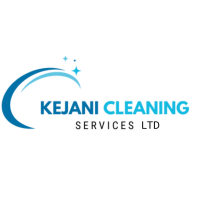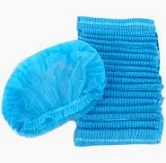In any healthcare setting, maintaining hygiene is non-negotiable. Among the many personal protective equipment (PPE) used in hospitals, hospital hairnets play a crucial yet often overlooked role. Whether you’re a nurse, a doctor, a surgical technician, or part of hospital cleaning staff, hairnets help reduce the risk of infection by keeping stray hair and scalp contaminants away from patients and sterile environments.
This comprehensive post explores the purpose, benefits, regulations, and purchasing tips surrounding hospital hair nets, including the popular blue hairnets commonly seen in medical environments.
Why Are Hospital Hairnets Important?
Hair naturally harbors bacteria, oils, dandruff, and other microscopic debris. In a hospital setting—where patient safety, surgical sterility, and general sanitation are critical—any uncontrolled element can pose serious risks. Here’s why hairnets matter:
-
Prevent Contamination: Loose strands or scalp particles can contaminate surgical sites, open wounds, or sensitive equipment.
-
Maintain Sterility: In operating rooms, maternity wards, ICUs, and labs, sterility is essential. Hairnets help ensure these zones remain uncontaminated.
-
Promote Professionalism: Uniform appearance among hospital staff instills confidence in patients and maintains order.
-
Meet Compliance Standards: Most healthcare institutions and regulatory authorities require the use of hairnets in sterile environments.
The Role of Hospital Hairnets Across Departments
In a hospital environment, different roles require different hygiene standards. Here’s how various personnel use hair nets in hospitals:
1. Surgical Teams
Surgeons, assistants, and surgical nurses wear sterile bouffant caps or fitted surgical caps. These hairnets cover the entire scalp and hair, often with additional face or beard coverings for full sterility.
2. Nursing Staff
Nurses, especially those working in critical care or labor wards, wear disposable or reusable hairnets to minimize risk while attending to vulnerable patients.
3. Janitorial and Cleaning Staff
Cleaners in hospitals must wear hospital hair nets when working in wards, theatres, or food prep areas to prevent contamination and comply with hygiene policies.
4. Kitchen and Catering Workers
Food safety rules require hair nets in hospital kitchens and cafeterias. In many Kenyan hospitals, staff are expected to wear blue hospital hairnets while preparing meals.
Hospital Hair Nets Blue – What’s Special About Them?
The color blue is the most commonly associated shade for hospital PPE for several reasons:
-
High Visibility: Bright blue hairnets are easy to spot. If one falls off, it’s noticeable and can be removed quickly to maintain cleanliness.
-
Symbol of Cleanliness: Blue is often associated with calmness, hygiene, and trust—all essential qualities in a hospital.
-
Differentiation: Color coding helps distinguish between roles. For example, nurses may wear blue while surgeons wear green or white.
At Kejani Cleaning, we offer blue disposable hospital hairnets made from lightweight, breathable material suitable for long shifts.
Types of Hospital Hairnets Available in Kenya
When selecting the right type of hospital hairnet, consider the environment and the user’s role. Here are the main types:
1. Bouffant Caps
-
Roomy, dome-shaped
-
Ideal for covering long hair
-
Commonly used by nurses, cleaners, and surgeons
-
Disposable and breathable
2. Surgical Caps
-
Tighter fit with reinforced edges
-
Designed for the operating room
-
Often reusable and autoclavable
3. Mob Caps
-
Lightweight and disposable
-
Elastic edge ensures secure fit
-
Ideal for short procedures or food handling
4. Beard Covers (Optional)
-
Paired with hairnets in surgical and cleanroom settings
-
Ensures full facial hair coverage
Each type is tailored for comfort, hygiene, and practicality based on daily hospital demands.
Hair Net Nursing: Why Nurses Need Hairnets
Nurses often work with vulnerable patients—newborns, surgical patients, and those with compromised immunity. Wearing a nursing hairnet offers several benefits:
-
Prevents shedding of hair into wounds, medications, or food
-
Complies with health policies
-
Reduces personal grooming issues on shift (e.g., hair falling into eyes)
-
Promotes cleanliness and uniformity among nursing teams
Nurses in Kenya, particularly in high-level referral hospitals, are routinely issued hairnets as part of their PPE, especially in COVID-19 wards, maternity units, and ICU settings.
Are Hair Nets Mandatory in Hospitals?
Yes, in many medical contexts, hospital hairnets are mandatory under health and safety regulations. While guidelines may differ from one institution to another, key Kenyan hospitals follow international infection prevention protocols, including:
-
Wearing hairnets during all surgical procedures
-
Using color-coded hairnets for different departments
-
Providing disposable hairnets in maternity, lab, and ICU settings
-
Ensuring food handlers wear hairnets while preparing patient meals
According to WHO and CDC standards, PPE like hairnets should be part of routine hospital attire in sterile or high-risk zones.
How to Wear a Hospital Hairnet Correctly
Wearing a hairnet correctly ensures maximum hygiene. Here’s how:
-
Wash or sanitize hands before handling the hairnet.
-
Unfold the net fully to reveal its structure.
-
Stretch the net over your head from front to back.
-
Tuck all hair inside, including sideburns, ponytails, or braids.
-
Adjust the net so it sits securely with no loose ends.
In environments with strict sterility (like operating theatres), staff may wear double hair coverings or combine the net with a surgical hood.
Disposable vs. Reusable Hairnets
Disposable Hairnets
-
Made from polypropylene
-
Used once and discarded
-
Best for hospitals with high patient turnover
-
Affordable in bulk
Reusable Hairnets
-
Made from cloth or polyester blends
-
Washed and sterilized after use
-
Cost-effective over the long term
-
Require strict laundering protocols
Where to Buy Hospital Hairnets in Kenya
Looking for high-quality hospital hairnets in Kenya? Kejani Cleaning offers:
✅ Blue bouffant disposable caps
✅ Bulk packaging for hospitals and clinics
✅ Lightweight, breathable, and latex-free options
✅ Budget-friendly pricing
✅ Countrywide delivery
Final Thoughts
Hospital hairnets are an essential part of personal protective equipment in any medical facility. They safeguard both patients and staff from potential infections and ensure sterile environments across departments.
From blue disposable hair nets to reusable caps for nurses, the right head covering promotes hygiene, professionalism, and legal compliance. Whether you’re managing a private clinic or a government hospital in Kenya, investing in quality hairnets is a small cost with huge health and safety returns.
Make sure your facility is properly equipped. For dependable supply and top-grade hospital hygiene products, trust Kejani Cleaning—your reliable partner in medical and janitorial solutions.



0 Comments